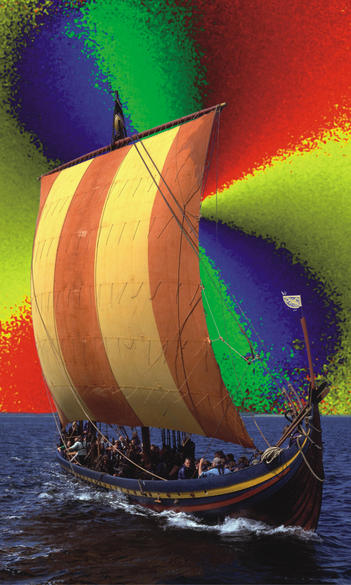Full-sky imaging polarimetry to detect clouds and to study the meteorological conditions favourable for polarimetric Viking navigation

One of the most important meteorological parameter is the percentage of cloud cover of the sky, which strongly influences both the weather and the climate. Nowadays clouds are usually detected and the cloud coverage is generally measuremed by automatic instruments using the colour picture of the sky. Earlier we have shown that the use of polarization patterns of cloudy skies measured by imaging polarimetry can considerably enhance the accuracy of cloud detection. Our first research goal is to build new-generation polarization cloud detectors, that are composed of three 180o field-of-view fisheye lenses, 3 digital cameras and 3 linear polarizers with different directions of polarization. We plan to test these polarimeters in Hungary and in an expedition on the Atlantic ocean. Setting two such polarization cloud detectors in a stereo pair with an appropriately large base distance, we study how the measured polarization information from the sky can improve the 3-dimensional cloud detection. Furthermore, with these polarimeters we also measure the influence of aerial volcanic aerosols, sand, dust and pollen on the sky polarization. In September 2011 a patent (P-1100482) of our polarization cloud detection method was submitted to the Hungarian Patent Office. Our second aim is to measure in biophysical laboratory experiments the error functions of the two main steps of the polarimetric Viking navigation based on the sky polarization analyzed by dichroic crystals (sunstones). Using the celestial polarization patterns measured by our imaging polarimeters, we determine those meteorological sky conditions that are favourable for this navigation method. This research was supported by the Hungarian grant OTKA K-105054.
Project leader(s): Horváth Gábor
Participant(s): Száz Dénes; Takács Péter; Farkas Alexandra; Bernáth Balázs; Egri Ádám; Blahó Miklós, Barta András; Hegedüs Ramón
Webpage: arago.elte.hu
Publication(s):
- Dénes Száz, Gábor Horváth (2018) Success of sky-polarimetric Viking navigation: revealing the chance Viking sailors could reach Greenland from Norway. Royal Society Open Science 5: 172187 (10 pages, doi: 10.1098/rsos.172187) DOI .
- Dénes Száz, Alexandra Farkas, András Barta, Balázs Kretzer, Miklós Blahó, Ádám Egri, Gyula Szabó, Gábor Horváth (2017) Accuracy of the hypothetical sky-polarimetric Viking navigation versus sky conditions: revealing solar elevations and cloudinesses favourable for this navigation method. Proceedings of the Royal Society A 473: 20170358 (18 pages, doi: 10.1098/rspa.2017.0358) DOI .
- Gábor Horváth, Péter Takács, Balázs Kretzer, Szilvia Szilasi, Dénes Száz, Alexandra Farkas, András Barta (2017) Celestial polarization patterns sufficient for Viking navigation with the naked eye: Detectability of Haidinger's brushes on the sky versus meteorological conditions. Royal Society Open Science 4: 160688 (12 pages, doi: 10.1098/rsos.160688) DOI .
- Dénes Száz, Alexandra Farkas, András Barta, Balázs Kretzer, Ádám Egri, Gábor Horváth (2016) North error estimation based on solar elevation errors in the third step of sky-polarimetric Viking navigation. Proceedings of the Royal Society A 472: 20160171 (15 pages, doi: 10.1098/rspa.2016.0171) DOI .

